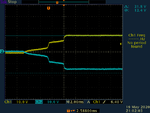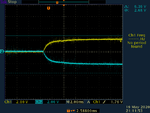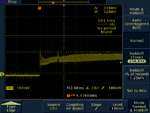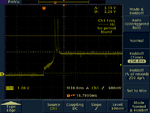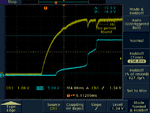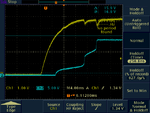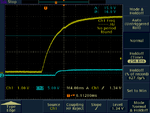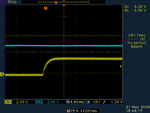el00
Member level 5
Hello, I have a pcb that is already functional, however I have a problem with a section powered by a TMR 6-0523 which does not like the board, apparently.
The load consists in a lot of audio amplifiers which in total draw about 3.5W. There is about 20uF of total capacity in parallel to the load, but according to Traco datasheet the maximum capacitance on each rail is 600uF, so there should be no problem.
I also added 100uF in parallel to the input. No luck. The DC converter does not start, it is stuck at about +/-3V.
But, if It add 24ohm (or more) in series to the outputs (two resistors, each for rail) then it works. It behaves as if there is too much capacitance, which is not, according to datasheet, so I do not understand what is the problem.
Now, having that resistance in series for a test is ok, but it is not acceptable so I decided use a LR (L in parallel to R) in series to the outputs. I tried to use a combination of 1mH parallel 24ohm, no luck. Tried 300uH parallel 24ohm, no luck. Tried to replace 24 with 27ohm, no luck.
What do you suggest?
The load consists in a lot of audio amplifiers which in total draw about 3.5W. There is about 20uF of total capacity in parallel to the load, but according to Traco datasheet the maximum capacitance on each rail is 600uF, so there should be no problem.
I also added 100uF in parallel to the input. No luck. The DC converter does not start, it is stuck at about +/-3V.
But, if It add 24ohm (or more) in series to the outputs (two resistors, each for rail) then it works. It behaves as if there is too much capacitance, which is not, according to datasheet, so I do not understand what is the problem.
Now, having that resistance in series for a test is ok, but it is not acceptable so I decided use a LR (L in parallel to R) in series to the outputs. I tried to use a combination of 1mH parallel 24ohm, no luck. Tried 300uH parallel 24ohm, no luck. Tried to replace 24 with 27ohm, no luck.
What do you suggest?
